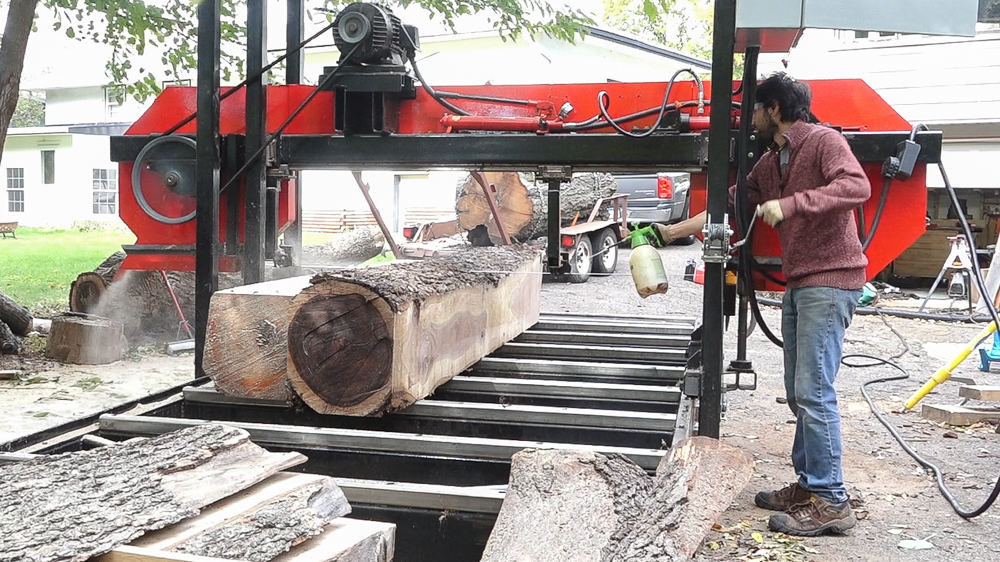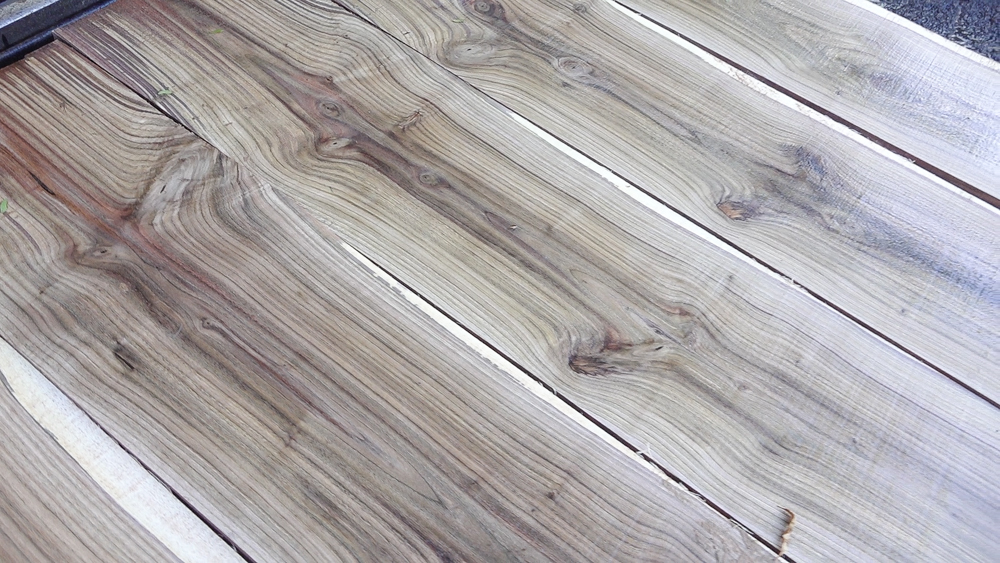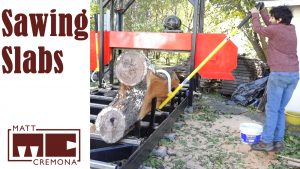
Kitchen Island, Barn Power – March 2024 Update
Welcome to my shop! This is a quick update to let you know what I’ve been up to. This big chunky thing is the leg
There are many ways to turn a log into usable lumber. This time we’ll take a look at the process of making edges boards.

I have a few walnut and cherry logs that I’ll be sawing in this series. The walnut logs I picked up out of a backyard (see post here) and the cherry logs were from a removal job that my friend Brandon had done.

The process to get the bottom logs turned into boards will be similar. I’m starting with the cherry log. The logs will first be squared up into a cant which will then be sliced into boards. To make the first side of the cant, I determine where I want that face to start in the log and come up one board thickness. This will give me a live edge board that can later be edged while making this face of the cant.

Next the log is rolled and the process repeated.

Cherry is one of my favorites to saw. It has such a varied color pallet.

The log is rolled and again, a board is pulled off before the final cut for the cant is made.

And lastly the process is repeated again on the last remaining face of the log.

The cherry log is now a cant and can be further sliced into boards. Since I have two logs to do, I’ll get the walnut log prepped into a cant as well so I can slice both at once.

As I’m working, I’m setting the boards with live edges aside so they can be edged later while I’m sawing the cants.

Again I’m rotating to a new face, making a facing cut, and then removing a board that will need to be further edged.

3rd face on the walnut log. You can see the board I’m about to pull off isn’t going to have much material in it.

Final face on the walnut log. Same deal here.

Now that the walnut cant is made I can start slicing boards. I’ve placed the boards that were previously cut between the cants so they’ll be edged as I go.

As I slice boards, I’ll examine the boards in the middle. Once a board has an edge cleaned up, I’ll turn it around so the other edge can be edged.

Once both edges of the boards are cleaned up, I can remove them from between the cants. These boards are all ready to go and I can continue making slices from the cants.

Here’s a look at the walnut boards. One thing you’ll notice about walnut is it is very green when it is first cut but as it has some time to oxidize, it will develop the more purple brown color we’re familiar with. You can see that color coming in along the end where the end grain allowed the log to oxidize before I sawed it.

Here’s a closer look at the walnut grain. I’m really happy with the results. I have some great sections with really clean straight grain and the areas of defect have some really interesting color and detail.

The cherry did end up with some dry rot as a result of the old limb that had grown over and therefore some rot staining permeating through the log. The stained areas are structurally sound and provide a very interesting color but in the traditional sense, those would be areas of defect.

The cants still need one last cut to complete their sawing. I stacked a couple of the slabs which we’ll cut next time on top to clamp the cants to the bed.
Products Used
60″ Peavey – https://amzn.to/2X8WtS9
78″ Cant Hook – https://amzn.to/2Is0RY1
Hi-Lift Jack: http://amzn.to/2nwL9Nq



Welcome to my shop! This is a quick update to let you know what I’ve been up to. This big chunky thing is the leg

Welcome back to the home renovation. This time I’m going to be working on the kitchen island. Here is a small model of the island.

Welcome back to our home renovation. Today I am going to be working on this wall. It needs some upper cabinets and the surround for
2 Responses
Watched several of your vids on youtube. I found you from wilkerdoos.
awesome! thanks!